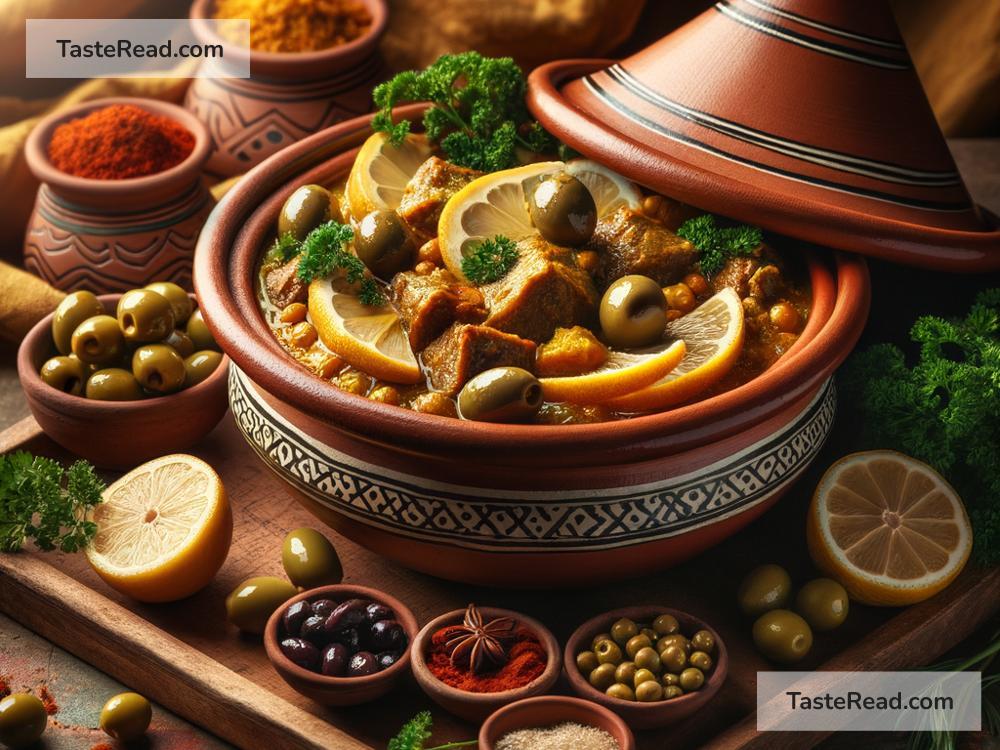The Influence of the Moroccan Tagine
Moroccan food is famous for being flavorful and varied, and one of its most well-known dishes is the tagine. A tagine is both the name of a dish and the earthenware pot it is cooked in. This slow-cooked stew, full of spices, meats, and vegetables, is more than just food—it’s a symbol of Moroccan culture and a dish that has influenced kitchens all over the world. In this blog, we’ll talk about how the Moroccan tagine has left its mark on cooking traditions globally, and why it continues to be loved by so many.
What Makes the Tagine Special?
The tagine pot has a unique design. It consists of a wide, shallow base and a cone-shaped lid. This shape helps trap steam while cooking, keeping food moist and merging all the flavors together. Traditional Moroccan tagines are cooked over a low fire or hot coals, which allows the ingredients to simmer for hours, resulting in tender meats and rich sauces.
The dish itself is incredibly versatile. Common versions include chicken with preserved lemons and olives, lamb with dried fruits and nuts, or vegetable tagines seasoned with cinnamon, cumin, and ginger. The combination of sweet and savory flavors, paired with aromatic spices, makes the tagine something truly special.
Cultural Significance of the Tagine in Morocco
In Morocco, food is much more than just fuel—it’s a way to connect with family and friends. Tagine dishes are often served during gatherings and celebrations, making them a symbol of hospitality. Sharing a tagine around the table is not just about eating; it’s a communal experience that brings people together.
Preparing a tagine is also seen as an art form. Moroccan home cooks take pride in carefully layering ingredients and seasoning them perfectly. Many spice blends used in tagines are passed down through families, making each dish unique to the household that prepares it.
How the Tagine Spread Across the World
The tagine first became known outside of Morocco due to trade and exploration. Morocco’s geographical location has always made it a crossroads between Africa, Europe, and the Middle East. Over centuries, travelers and merchants visiting Morocco were introduced to its delicious food, including the tagine. Some brought back spices or learned recipes, sharing their discoveries with others.
In recent decades, Moroccan cuisine has grown significantly in popularity, thanks to global travel, food shows, and cookbooks. People who visit Morocco often fall in love with the tagine, and chefs around the world have adapted tagine recipes for modern kitchens. You can now find tagines on menus in restaurants far from Morocco, from Paris to New York to Tokyo. Cooking classes and specialty shops also help spread knowledge about tagines, inspiring home cooks everywhere.
Why the Tagine Works Well in Other Countries
The influence of the tagine is partly due to its adaptability. While it originates from Morocco, people can use the basic method of slow-cooking in the tagine pot to create their own versions of the dish. For example, cooks in France might add wine to their tagines, while chefs in India might incorporate local spices like turmeric and cardamom.
Additionally, tagine pots are now readily available worldwide. Even people without traditional Moroccan pots can make similar dishes using slow cookers, Dutch ovens, or clay pots, showing how the essence of the tagine can fit into many kitchens.
Its popularity also comes from its simplicity. Tagine cooking is all about layering ingredients and letting them cook slowly, which is perfect for people looking for low-effort, high-flavor meals. The dish can be as humble or as fancy as you like—it works just as well for weekday dinners as it does for special occasions.
The Tagine’s Global Legacy
Today, the tagine embodies the idea of blending cultures. While it will always have its roots in Morocco, it has influenced how people think about food worldwide. In many ways, the tagine represents the best of the culinary world—it’s a process that takes time but rewards patience with layers of flavor. Its combination of practicality, tradition, and creativity explains why this Moroccan dish has become an international favorite.
Beyond being a delicious dish, the tagine also carries stories with it. It tells the tale of Morocco’s rich history as a meeting place of cultures, and its ability to take simple ingredients and turn them into something extraordinary. In every country it reaches, the tagine reminds cooks and diners alike of the importance of preserving tradition while embracing innovation.
Conclusion
The Moroccan tagine is not just a dish; it’s a cultural treasure that continues to inspire chefs and food lovers all over the world. Its unique style of cooking, bold flavors, and deep roots in Moroccan life have helped it become a favorite far beyond its homeland. Whether enjoyed in a Moroccan market, a trendy restaurant, or your own kitchen, the tagine proves that food has the power to connect us, to tell stories, and to bring a little bit of Morocco’s warmth into every corner of the globe.


